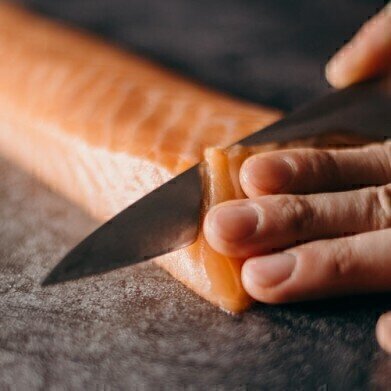LC-MS
How Nutritious is Your Salmon? - Chromatography Explores
Jun 21 2020
Fresh or tinned, fillet or smoked – how do you like your salmon? And besides taste does it really matter how you eat your salmon? Well, it seems that the way you like to eat your salmon and where it comes from could determine how nutritious it really is for you. A recent paper published in the journal Current Developments in Nutrition compared the levels of a carotenoid in salmon from both wild and farmed sources and between fresh, tinned and pouch salmon. So, does it make a difference where your salmon comes from?
Astaxanthin – red and pink animals all over
The nutrient that the researchers from Colorado were interested is the carotenoid known as astaxanthin. It is a lipid-soluble pigment that is red orange in colour. The colour is due to the extended chain of conjugated bonds – alternating double and single carbon bonds – at the centre of the molecule. It is this extended chain of double and single bonds that is responsible for the antioxidant properties of the compound. They result in a region of decentralized electrons that can easily be donated to reduce any oxidizing molecules.
Astaxanthin is the red pigment that can give the colour to salmon, shrimp, and flamingos. Astaxanthin is like β-carotene in carrots and vitamin A. It is made by algae and plankton. These are eaten by many different aquatic species including shrimps which store the pigment in their shells giving the pink-red exterior. The shellfish are then eaten by larger animals including salmon and flamingos. They store the pigment in their skin and fatty tissue. Therefore, salmon are pink. If farmed salmon do not have access to natural sources of astaxanthin their flesh is white. Subsequently, farmed salmon are fed a source of astaxanthin food colouring to make their flash a nice pink colour that consumers like.
Chromatography analyses the red in salmon
The researchers bought different salmon types and forms from shops in Colorado including wild, farmed, tinned and pouch. The salmon samples were freeze-dried and then the astaxanthin was extracted using liquid-liquid extraction techniques. The samples were then analysed using liquid chromatography-mass spectrometry. Astaxanthin is a chiral molecule, and as reported in the article Separation of the 4 Enantiomers of the Fungicide Spiroxamine by LC-MS/MS liquid chromatography can be the best tool to analyse chiral molecules.
The researchers found that astaxanthin concentration was higher in fresh salmon when compared to tinned or pouch salmon. Astaxanthin levels were similar between farmed and wild salmon and cooking made little difference. With astaxanthin being studied for its potential antioxidant and anti-inflammatory properties, it seems wild or farmed salmon might be more nutritious than tinned salmon.
Digital Edition
Chromatography Today - Buyers' Guide 2022
October 2023
In This Edition Modern & Practical Applications - Accelerating ADC Development with Mass Spectrometry - Implementing High-Resolution Ion Mobility into Peptide Mapping Workflows Chromatogr...
View all digital editions
Events
Nov 12 2024 Tel Aviv, Israel
Nov 18 2024 Shanghai, China
Nov 18 2024 Plainsboro, NJ, USA
Nov 20 2024 Karachi, Pakistan
Feb 03 2025 Dubai, UAE














